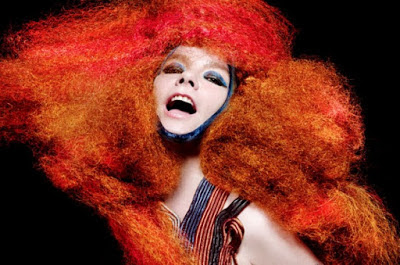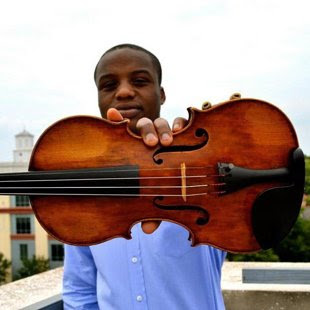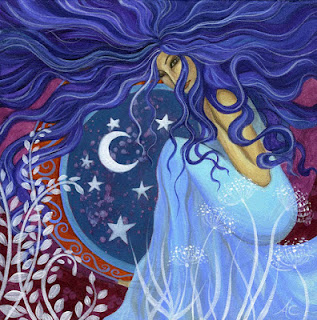The Amazing New Energy Artist: Bjork: Biophilia ~ Part One
Bjork~Biophilia: Part One
by Margo Renay Sullivan
Bjork, in her latest artistic creation {2012} , has combined science and music and technology using ipod apps, art, and performance education too. Now that is a New Energy Artist. Her lyrics are about the cosmos and not linear at all. It is brilliant. Her creative style is Out of the Tube and paving the musical road for the rest of humanity.
Biophilia~ The Multi-Media Tools:
Music, Apps, Internet, Installations, and Live Shows
The album is "partly recorded" on an iPad and, as well as a standard CD release, will be released in the form of a series of apps. Biophilia is the world's "first app album" in collaboration with Apple. Björk has described the project as a multimedia collection "encompassing music, apps, Internet, installations, and live shows". Material from the album debuted during a concert series which was held in the summer of 2011 at the Manchester International Festival.
Interactive Design:
Biophilia for iPad includes ten separate apps, all housed within one "mother" app. Each of the smaller apps will relate to a different track from the album, allowing people to explore and interact with the song's themes or even make a completely new version of them. It will also be an evolving entity that will grow as and when the album's release schedule dictates, with new elements added.
Every app includes a game related to the song, the score of the song created by Björk and Jónas Sen, animations and a musical essay written by Nikki Dibben. Scott Snibbe, an interactive artist who was commissioned by Björk back in the summer of 2010 to produce the app, as well as the images for the live shows (which will combine his visuals with National Geographic imagery, mixed live from tablet computers on the stage), describes how Björk saw the possibilities of using apps, not as separate to the music, but as a vital component of the whole project.
While it is technically not the first app-album (the first is Bluebrain's The National Mall, a location-aware album that is available in no other form and was composed specifically for the iPhone) it is Björk's first venture into experimenting with apps.
For the music, Björk related the phenomenon the song describes to a musical structure or
resource. For example; the song "Moon" has different musical cycles that repeat throughout the song; the song "Thunderbolt" contains arpeggios, inspired by the time between when lightning is seen and thunder is heard;[ and in "Solstice", the counterpoint makes reference to the movement of planets and the Earth's rotation, and the pendulums used on the song make tribute to the Foucault pendulum. The lyrics also present metaphors to those phenomena. "Dark Matter" features heavy gibberish since the dark matter phenomena are directly "unexplainable". "Virus" describes "fatal relationships" such as the relationship between a virus and a cell, as Björk explained: "It's like I have this new neighbour that I have to sort of learn to live with";
"Solstice" presents the relation between the gravity effect on celestial bodies and on human beings and in "Hollow", Björk took inspiration from her "ancestors and DNA, that the grounds open below you and you can feel your mother and her mother, and her mother, and her mother, and her mother 30,000 years back. So suddenly you're this kinda tunnel, or trunk of DNA… All these ghosts come up so it ended up being a Halloween song and quite gothic in a way… It's like being part of this everlasting necklace when you're just a bead on a chain and you sort of want to belong and be a part of it and it's just like a miracle."
Björk also breaks the typical 4/4 time signature structure for many of the songs on Biophilia. For example, "Solstice" features 7/4 and 6/4 time signatures; "Hollow", "Crystalline" and "Moon", all feature a 17/8 time signature; "Mutual Core", 5/4 time signature and "Virus", 3/4 time signature.




Comments
Post a Comment